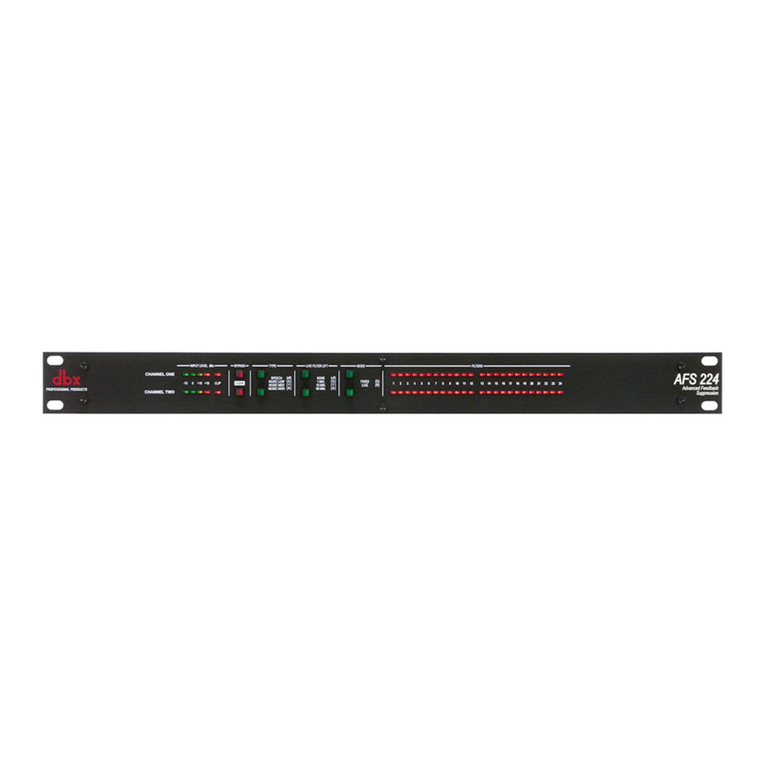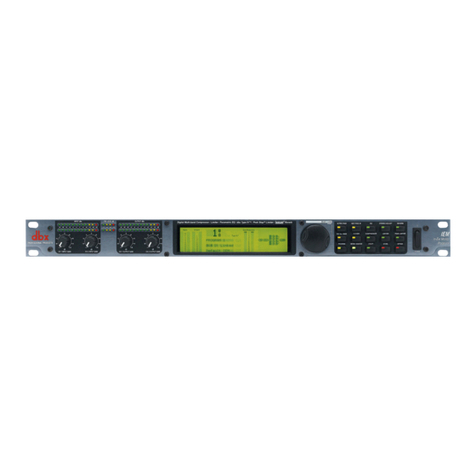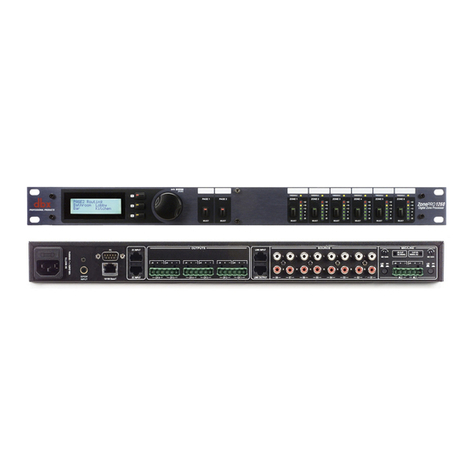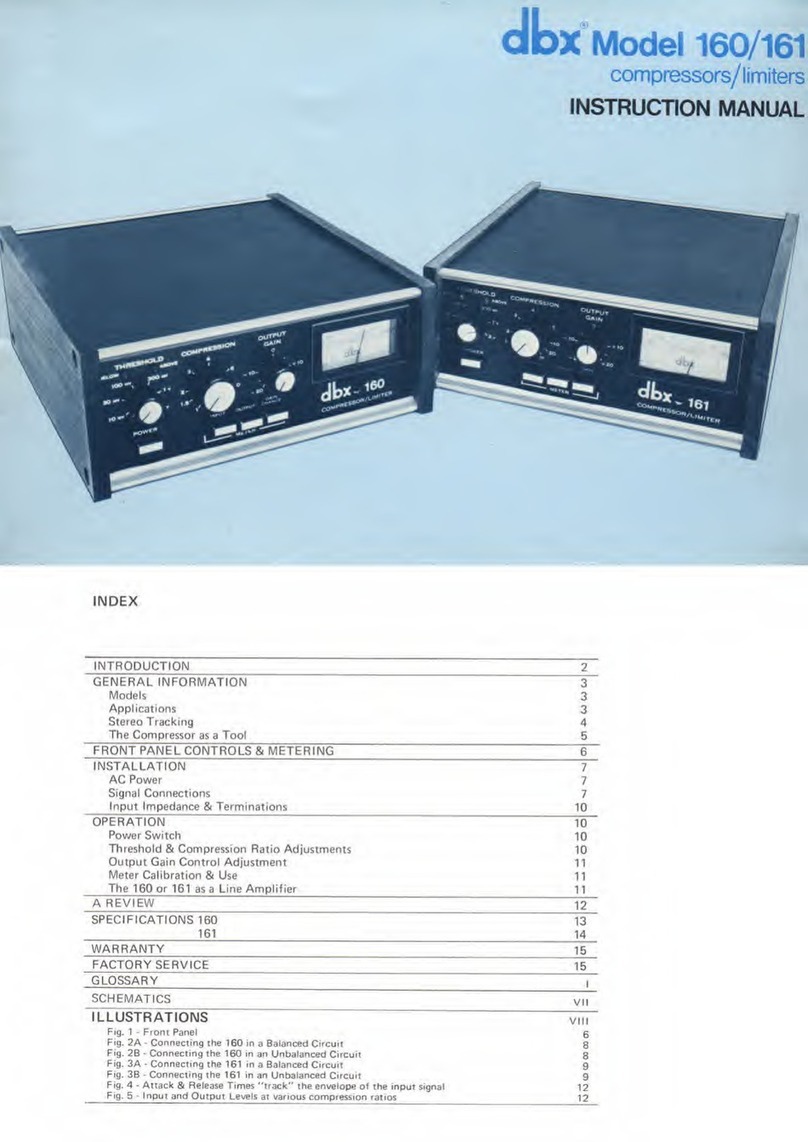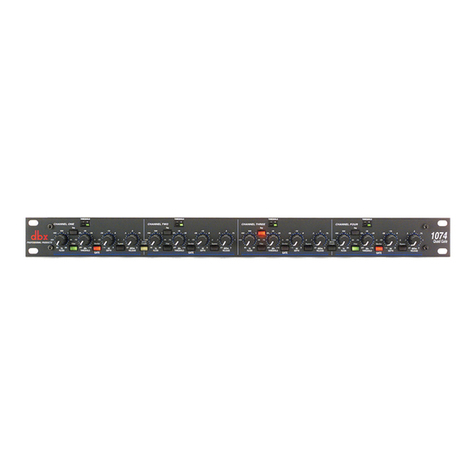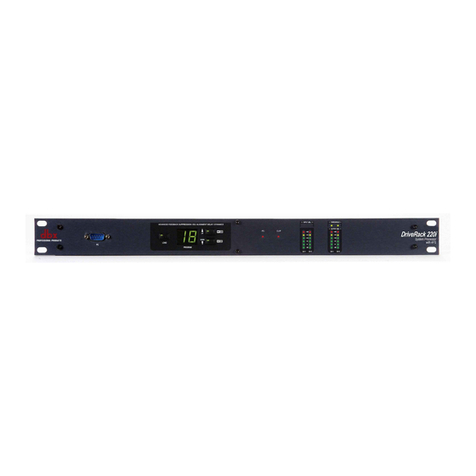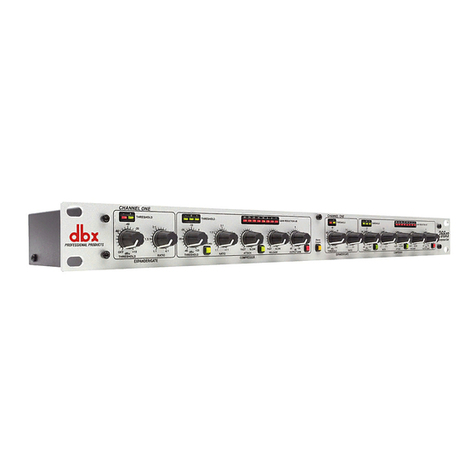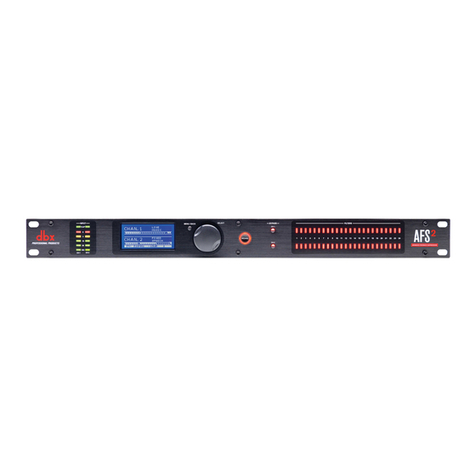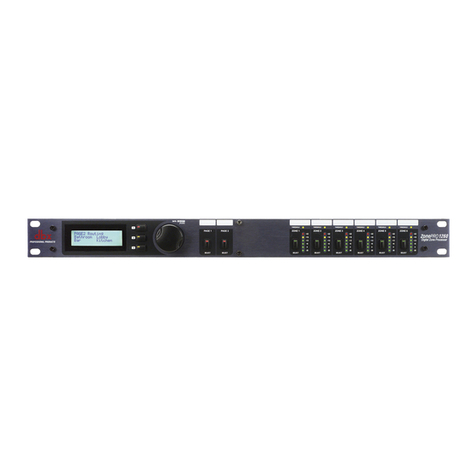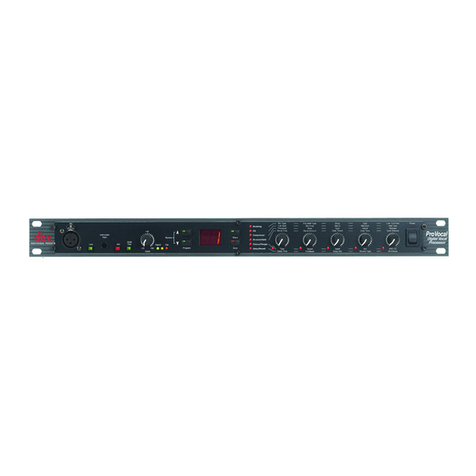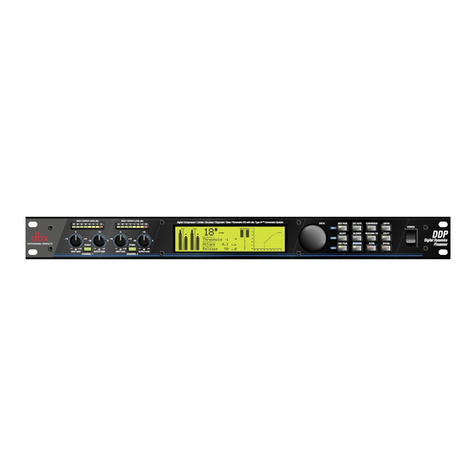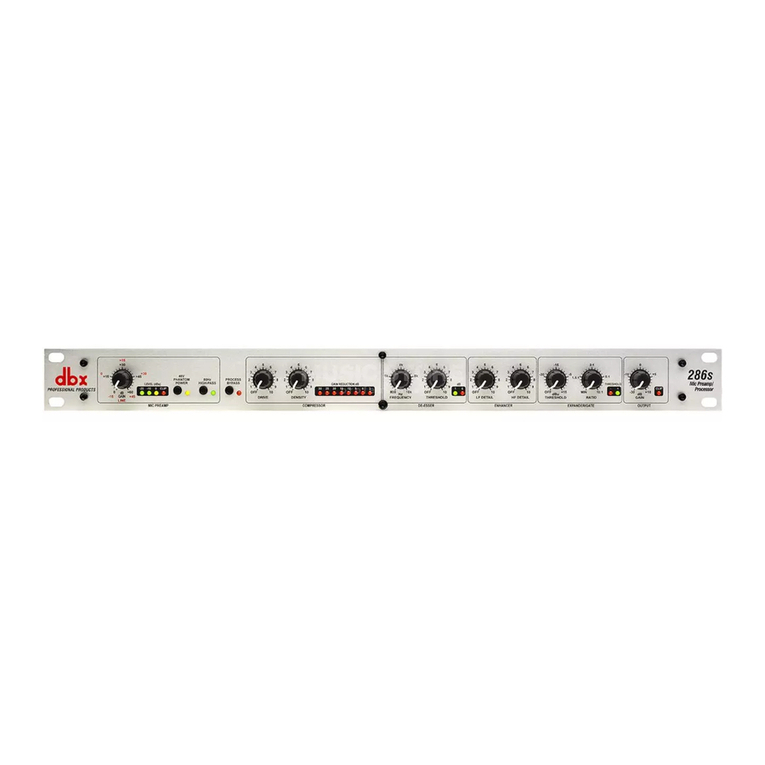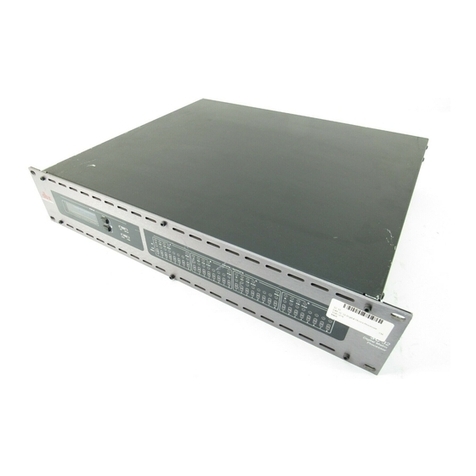
ABOUT COMPRESSION
General
The purpose of acompressor is to reduce the dynamic range of aprogram and give
you control over its dynamics. The i66's Ratio and Threshold controls can produce a wide
variety of dynamic-range-reduction effects, from gentie taming of overaii dynamics to
iimiting of peaks to squashing all dynamics.
For example, at low compression ratios, avery low Threshold setting can be used to
reduce gently the overall dynamic range of aprogram. Higher ratios with low thresholds
will provide leveling for instruments and vocals. High thresholds generally are used for
limiting program levels overall. Ratios of 6:1 and higher effectively prevent outputs
levels from much exceeding the threshold (assuming the Output Gain is set to 0).
Note that compression of the entire program (produced by low thresholds) tends to
sound less natural at high ratios. Ratios of perhaps 4:1 and lower affect dynamics to a
lesser degree, and are often used to tighten up abass guitar, snare, and vocals. Moderate
settings typically are used during mixdowns and for leveling the program in abroadcast.
The 166's OverEasy circuit prevents compression at high ratios from sounding too
unnatural. This is because as the signal rises above threshold, the ratio changes graJ^
uaily, from 1:1 (no compression) to that set by the front-panel knob. You can put this
feature to especially g<^ use in those situations when you need protection from exces-
sive F>eak levels but desire gentle compression on most of the program. By setting the
threshold at amoderate level and using a moderately high compression ratio (6:1, 10:1,
etc.), you will provide limiting for signals well above threshold and gentle compression
(much less than that set) for signals at or below threshold. See the OverEasy curve, p. 2,
to understand how this works.
It's always useful to watch the gain-reduction LEDs to see the amount of proc-
essing taking place. With practice, aglance will confirm what your ears tell you —
that things are going okay, or that there's alittle too much or too little. Your 166 can
achieve desirable effects with proper settings derived from experience; whoi it's used
too liberally, the unusual results may be suited to special effects only.
Here are some specific situations.
Variations in mike levels
As the distance between vocalist and microphone changes, signal levels change.
Start at 2:1 with alow threshold setting to begin to smooth these out. With OverEasy,
ratios up to 10:1 can be used here to good effect.
Variations in instrument levels
To achieve smooth electric^ass sound, start at about 4:1. Strings and horns like-
wise benefit, and strings will have their "sustain" increased. Note that large amounts of
compression are usually more audible in amixed stereo program; if the separate tracks
were compressed before mixing to create the program, compression is much less notice-
able.
Raising the signal out of amix
Since r^ucing dynamic range can increase the average signal level and meter
readings, asingle track can be brought up out of amix by boosting its level slightly and
applying compression. It's also possible to separate certain vocals and instruments from
an ciiready mixed program by using the sldechain; see p. 10.
-g-






